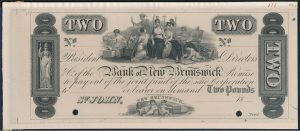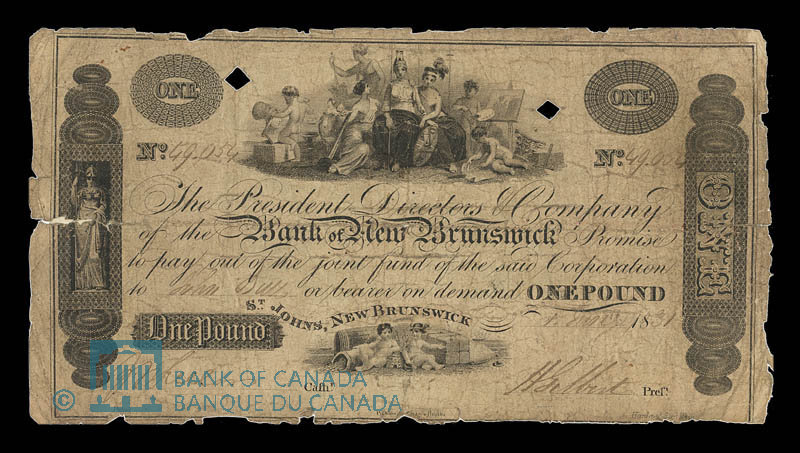On today’s date in 1820, the Bank of New Brunswick was incorporated in Saint John, where it became the first bank in present-day Canada to operate under a charter.
Located in a new building on Prince William Street in Saint John – the capital of what was then the British colony of New Brunswick – the bank was founded by prominent businessmen from the area.
Among these founding members and shareholders was Robert Pagan, who was “one of the 12 wealthiest men in the province,” according to the Dictionary of Canadian Biography.
John Robinson was another prominent early shareholder. At the bank’s first stockholders’ meeting on June 12, 1820, Robinson was elected to the board of directors.
“That same day the directors promoted him to the presidency of the new institution,” adds the Dictionary of Canadian Biography. “As province treasurer, Robinson was by far the bank’s most important customer and his election may be seen as the confluence of government and great merchant interests.”
With its new charter, the Bank of New Brunswick soon began issuing banknotes, which it would continue to produce until 1906. Denominations included $1, $2, $3, $4, $5, $8, $10, $20, $50 and $100.
Throughout the 1820s, Saint John was the Maritime’s largest city, exceeding both Halifax and Toronto in population into the 19th century.
By the 1900s, the bank lacked the necessary capital to remain competitive. Its shareholders accepted an offer to merge with the Bank of Nova Scotia in February 1913. The large city of Saint John failed to attract overseas investment despite higher returns when compared to Upper Canada.

A black-and-white proof of the Bank of New Brunswick’s £2 issue of 1838-59 was offered in the Canadian Legacy Sale II. Photo by Moore Auctions.
MOVING WEST
Generally, investors took their money to Central Canada.
The bank’s headquarters moved west to Montréal – along with investors – as the newly formed Dominion of Canada was coming to fruition.
The Saint John Board of Trade wished for a “commercial union” with the United States; however, the Toronto Board of Trade opposed the union. At the time, the House of Commons was controlled by Ontario’s 100 seats – 59 of which were Conservative, including Toronto – while New Brunswick had 19 seats with three Liberals from Saint John.
The government of John A. Macdonald voted against an 1888 commercial union bill that would have granted Saint John access to a much larger U.S. market, continuing its economic power. Instead, the city was cut off from much of Central Canada and experienced widespread decline over the following century.

